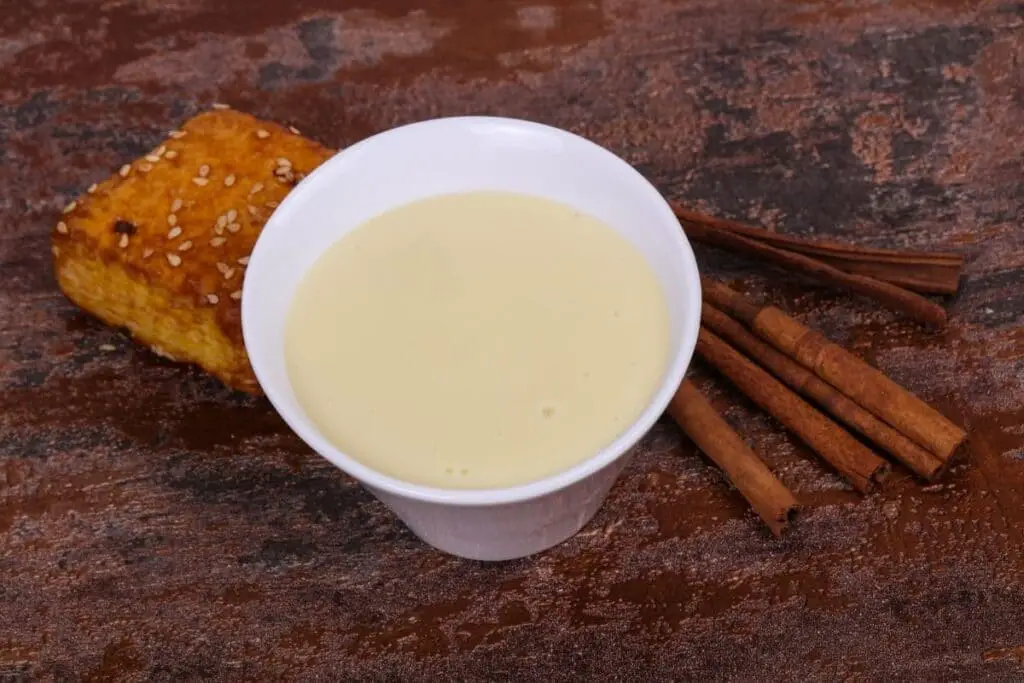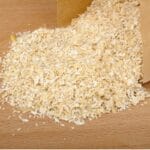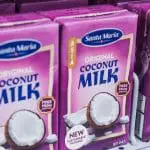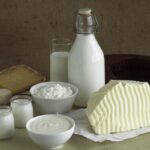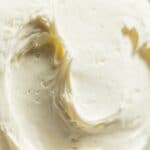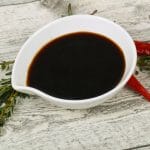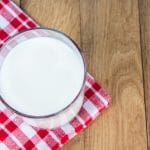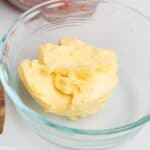Key points:
- Regular milk, used as a substitute, might need a thickener for certain recipes like sauces.
- Cream adds richness but is high in fat and calories, making it less suitable for calorie-conscious individuals.
- Half and half is ideal for baking due to its consistency, being a mix of milk and cream.
- Powdered milk can be reconstituted to desired thickness by adding less water than usual.
- Non-dairy alternatives like soy, rice, nut, coconut, and oat milk can also be used in recipes.
- Adjustments may be necessary for taste and consistency based on the alternative used.
Evaporated milk is a deliciously creamy dairy milk product with a consistency somewhere between milk and cream. It is similar to condensed milk and used in sweet and savory dishes from pumpkin pie, fudge, and fridge tart to pasta sauces, salad dressings, soup, and stew.
Whether you don’t have any evaporated milk on hand or need to cater to someone with a dairy allergy, there is a wide range of evaporated milk substitutes you can use in your recipe.
In this guide, we’ll help you choose the best alternative according to the dish you are preparing and even give you easy instructions to make your own evaporated milk at home.
How to Choose the Best Evaporated Milk Replacement
While there is a wide range of pantry alternatives you can use when you don’t have evaporated milk, some options will be less suitable for certain recipes. The best substitute choice will depend on the following:
Dietary needs
If you are watching your weight, options like cream and coconut cream or coconut milk are not the best choices as they contain a higher amount of fat and calories.
Allergies
All dairy options including cream, half-and-half, and powdered milk will not be suitable for anyone with dairy allergies. In these cases, vegan options are better. Also, be aware of soy or nut allergies and additives. It is always best to check the ingredients list on the product label to be sure the product does not contain anything you are allergic to.
Sugar
Many alternatives contain added sugars. When choosing a replacement, opt for unsweetened varieties to get a closer flavor profile. If you are making a dessert or sweet recipe and you use a sweetened product as an alternative you may have to decrease the amount of sugar added elsewhere in the recipe to prevent it from being overly sweet.
Flavor
Some substitutes will change the flavor of your dish. If you choose to use coconut or soy alternatives, make sure the flavors match the overall profile of your dish.
Cooking methods
Not all substitutes will react the same way to heat or freezing. Make sure the substitute you choose is suitable for the cooking method required.
How to Make Your Own Evaporated Milk
Evaporated milk is exactly what the name defines – milk that has been evaporated. During the heating process, it loses 60% of its water content, thereby yielding the evaporated version. It has a slightly thicker consistency than regular milk, a cream color, and a light caramel undertone.
If you don’t have evaporated milk on hand but have regular milk, you can quickly whip up your own batch by heating 2.5 cups of milk on the stovetop, stirring occasionally. Let it simmer uncovered until the volume has reduced by more than half. Leaving it uncovered, let the homemade evaporated milk cool down before using it in your recipe.
You can also use lactose-free milk to make lactose-free evaporated milk in the same way.
Best Evaporated Milk Substitutes
Replace evaporated milk measure for measure with these alternatives.
1. Milk or Lactose-Free Milk
If you don’t have time to make your own evaporated milk, you can use regular whole milk as an alternative. Since milk is thinner and slightly less sweet you may need to add a thickener such as a cornflour slurry or a little flour to obtain the right consistency in sauces and soups.
If used in baking recipes, you may have to adjust your dry ingredients by adding just one to two tablespoons more flour and a touch more sugar for the same flavor and consistency.
Best used in: Sauces and baking recipes. Not suitable for dressings or fridge tarts.
See more: Substitute for whole milk
2. Cream
Cream is thicker and higher in fat than evaporated milk but adds great richness to any recipe. If you are health conscious and trying to watch your calorie intake, this may not be the right option for you.
Best used in: Sauces, soup, pie filling, casseroles, frozen desserts, and custards.
Although it can be used as a substitute in baking, you are better off using an alternative that has a similar thickness to evaporated milk to avoid risking an incorrect batter consistency.
3. Half and Half
Half and half is a good alternative to use in baking since it has a thinner consistency than heavy cream which means it won’t mess with the consistency of your batter. Half and half is a blend of milk and cream in equal quantities. You can even make your own blend at home with the two ingredients.
Best used in: Any recipe that calls for evaporated milk including baked goods, sauces, soup, casseroles, and desserts.
See more: Half and half substitute
4. Powdered Milk
Powdered milk is milk that has been dehydrated into a powder. This allows it to last much longer than the fresh version. The great thing about this ingredient is that you can reconstitute it to the consistency that you need.
To get a similar consistency to evaporated milk add less water than you normally would to make regular milk. Add half the usual quantity of water and then add small amounts at a time until you get the consistency you are after.
Best used in: Baking recipes
Non-Dairy Substitutes for Evaporated Milk
If you have non-dairy milk on hand you can use the same stovetop DIY evaporated milk recipe as mentioned above to make a vegan dairy-free substitute at home. Opt for an unsweetened, unflavored alternative to obtain a similar sweetness level.
If you use a sweetened product you may have to reduce the sugar content elsewhere in your recipe to balance it out. Some plant-based types of milk have a thinner consistency than dairy. That means you may have to add some thickener to get the right consistency.
5. Soy Milk
Soy milk is produced from dried soybeans which are soaked and then ground in water. The mixture is then filtered to produce a smooth milky drink. The taste is somewhat different from regular dairy but will only affect the taste of your recipe if you are using very delicate flavors or not much additional flavor at all. If used in baking, stews, and sauces, you should hardly notice the difference.
Keep in mind that some people do suffer from soy allergies or prefer to avoid them for other health reasons. If you regularly use soy milk in your home, this can be an easy alternative to grab when you are in a pinch. Add a little thickener such as a cornstarch slurry or flour to thicken sauces, stews, or soup if necessary.
Best used in: Baking, casseroles, and stews.
6. Rice Milk
Rice milk is a good alternative if you are allergic to dairy and soy. It is also gluten-free. It has a thinner consistency than regular dairy. You will therefore need to add a thickener when using it as an alternative.
When baking, adjust your dry ingredients by adding one or two extra tablespoons of flour to correct a consistency that is too runny.
Best used in: Baking, sauces, stew, soup, and casseroles.
Not suitable for dressings.
7. Nut Milk
As with most non-dairy versions, nut milk is a little thinner than cow’s milk. It is made by blending nuts with water and then passing it through a filtration process. You can use cashew, hazelnut, or almond milk as a replacement, keeping in mind that you may have to add some thickener or adjust the recipe ingredients to maintain the correct consistency.
Nut milk is a good healthy option and generally low in calories if you use unsweetened, unflavored brands. The taste is different from regular dairy but not so much so that it will overpower other flavors in your dish. It can even add a slightly nutty note depending on the recipe you are making.
Best used in: Baked goods, sauces, and stews.
Not suitable for people with nut allergies or for dressings due to its thin consistency.
8. Coconut Milk
In terms of consistency, coconut milk is the closest non-dairy alternative to evaporated milk, however, the flavor is a lot different and will affect your dish. It is a high-calorie product so not the best choice for those on a calorie-conscious diet.
Coconut milk can be used in sweet and savory dishes. When choosing this as a replacement keep in mind that your dish will end up with coconut undertones so make sure the flavors match the other ingredients in your recipe.
Best used in: Any recipe that calls for evaporated milk
See more: Substitute for coconut milk
9. Oat Milk
Oat milk has gained popularity as a healthy dairy alternative and contains a little dietary fiber. You can make it yourself by blending oats in water and filtering it through cheesecloth or buy it ready-packaged. As with other non-dairy replacements, you may have to add some thickener or sweetener to achieve the required consistency and sweetness.
Best used in: Baked items, sauces, stews, and casseroles.
Not suitable for dressings due to its thin consistency.
FAQs
Conclusion
Evaporated milk is deliciously smooth and creamy liquid dairy used in a host of sweet and savory recipes. Most alternatives will need to be heated to reduce the water content and yield the right consistency for your recipe. You can also add a thickening agent if required.
Alternatives such as half and half reconstituted powdered milk, and coconut milk can be used as-is and don’t require any thickening which makes them the quickest hassle-free options for scrumptious baked goods, sauces, and soups.
Here’s more on evaporated milk shelf life.
See more: Condensed milk substitute
*image by AndreySt/depositphotos
